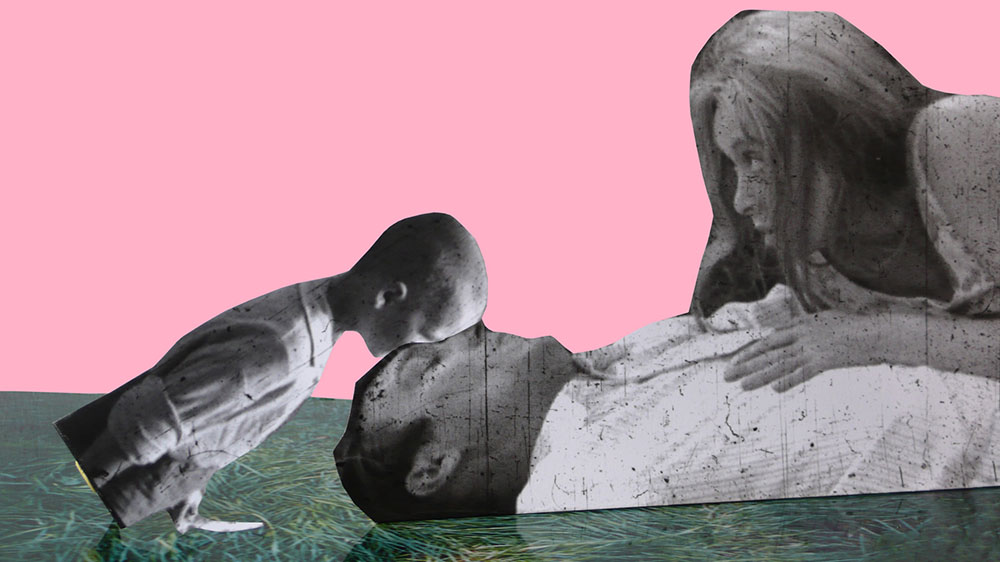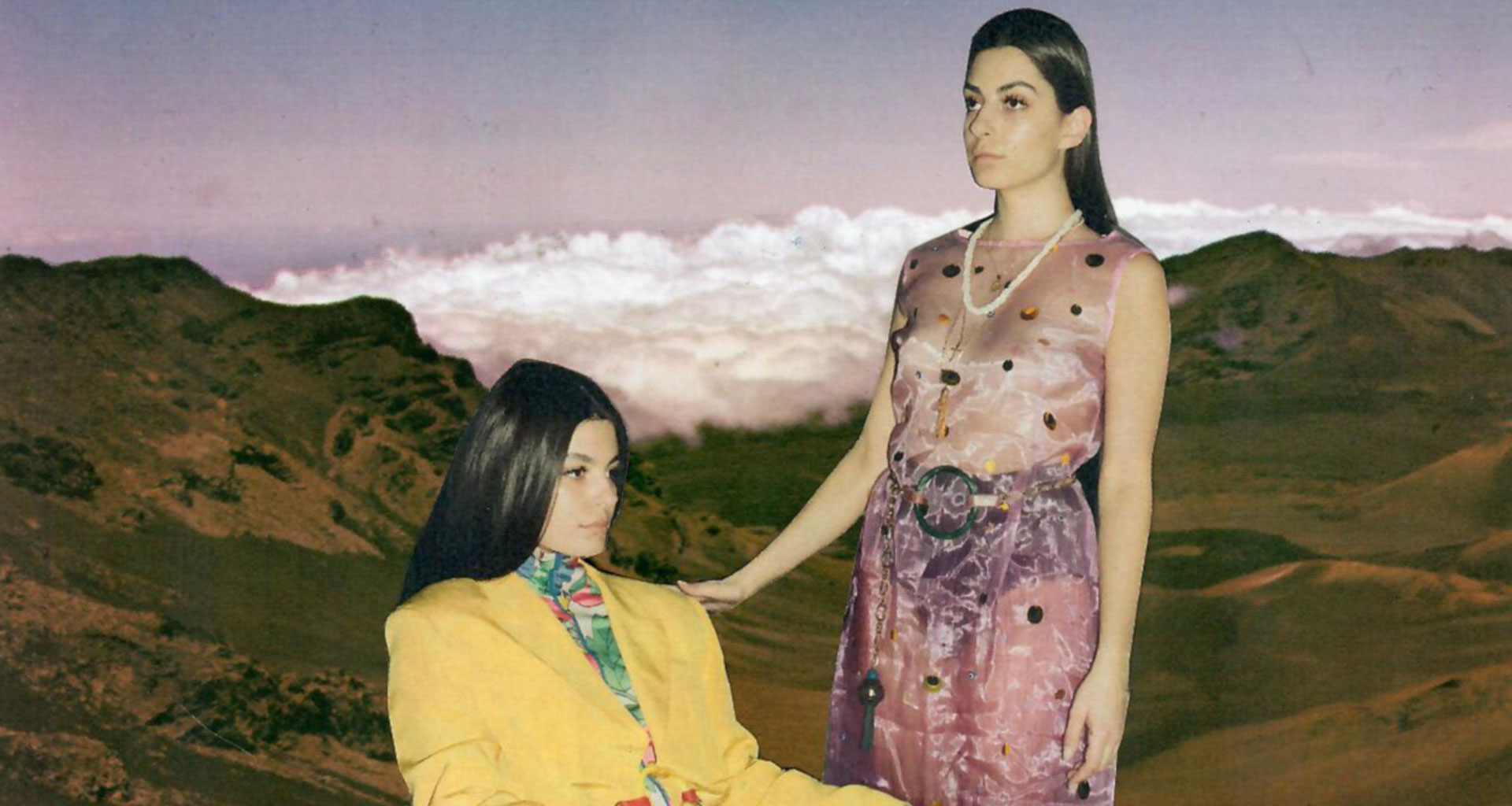Made from travel brochures and porn mags, these seductive collages subvert the Western gaze
Aikaterini Gegisian’s creative practice has always been inspired by her mixed Greek-Armenian heritage. With her latest photo book, Handbook of the Spontaneous Other, she asks — is it possible to explore belonging without self-orientalising?
At the back of Aikaterini Gegisian’s new book, Handbook of the Spontaneous Other, is a short, mysterious text. “Standing there petrified in white ripples,” it opens. “The embrace begun a motion. Will we turn our backs and dance to unknown rhythms? Will we thrust our hands up in joy or despair? Will we find a language with which to speak?”
Gegisian worked on the text for a long time, but says she only realised who the “we” was after she’d finished writing it — the images. Culled from sources such as porn magazines, tourist brochures, adverts, and National Geographic back issues, these images are arresting, seductive and sometimes risqué; liberating them from their original contexts, Gegisian has combined them into riotous collages, matching colour, form and subject to reveal some of their hidden logic. In doing so, she says, she’s given them a chance to ‘speak’.
There’s the vibrant red of an exotic fish, which is mashed into a grotesque funfair effigy
“The whole book is as if the Spontaneous Other is trying to speak,” she explains. “It’s an attempt to find a place where this Spontaneous Other can speak. By speaking, the Spontaneous Other provides different possibilities for expressing pleasure; it allows this multiplicity of ways of encountering the body and nature and so on. It’s a way of understanding the photographic as a kind of thinking space that is not totally controlled by us.”
“While you’re trying to self-improve, you’re just working more, and while you’re working more you’re not able to think politically”
There’s the mottled green background that’s used in a studio shot of a plate and again in a photograph of a cat, for example; then there’s the elegant curve of a woman’s back, which is echoed in a shot of a snowy mountain. There’s the vibrant red of an exotic fish, which is mashed into a grotesque funfair effigy; there’s a shot of an athlete whose outstretched arm is matched with a spiky cactus.
Nearly all of the images were shot in the US between the 1950s and 80s; those that weren’t were produced in Western Europe. In showing their visual correspondences, says Gegisian, she hopes to reveal the shared ideology that underpins them. The photographs of athletes and porn stars suggest an approach to the body that’s all about self-improvement and labour, for example, while the images of nature suggest a proprietorial approach. For Gegisian, both can be read as expressions of a consumer culture, a culture in which anything can be commodified.
“I read all these images as expressions of lifestyle culture, and lifestyle culture is an expression of consumerism,” she explains. “All of these things are ways of being part of this capitalist machine of assimilation. While you’re trying to self-improve, you’re just working more, and while you’re working more you’re not able to think politically or in terms of solidarity with others because you’re caught on this wheel of self-fulfilment or self-expression.
“But through this clash of encounters, I’m trying to open up different possibilities of how we can relate to others, to objects, to spaces, to nature, to animals,” she adds. “The whole book is an opening up of possibilities.”
As such, while Handbook of the Spontaneous Other is critical, Gegisian doesn’t want it to be didactic. She tried to ask questions rather than fix things down, she says, which meant she was also open to the idea that glossy images can be pleasing. Photographs in tourist brochures are designed to be visually alluring, for example, while porn can quite literally have a physical impact.
Colour is an important organising factor throughout, a deliberate tactic to suggest a visual, not textual, narrative. The opening and closing sections use monochrome images, while the seven chapters in between include lurid technicolour. The opening chapter is relatively conservative, with the collages presented on white paper, but the last chapter uses black pages to present more disturbing, threatening imagery. The sections in between use vividly coloured papers, often matched to the collages, which were selected intuitively on what was pleasing to the eye.
It’s an unusual, self-assured publication, but then Gegisian is a well-established artist. Born in Thessaloniki to a family with roots in Armenia and Turkey, she has represented Armenia at the Venice Biennale and has previously published an artist’s book, A Small Guide to the Invisible Seas. She makes film and sound works as well as using found images, and she has a PhD from the University of Westminster. In 2014, she was a visiting scholar at the University of Pennsylvania.
In fact that stay in the US was pivotal because, until then, Gegisian’s work focused on “the popular culture of peripheral modernities”, looking at photography’s role in creating national identities in post-Soviet and post-Ottoman states. Living in New York, “immersed in the visual and popular culture of the US”, Gegisian realised how dominant this language was, and started to collect images made there for the first time. Soon she’d made a short series titled Falling Tight, putting together images of gymnasts and images of space rockets from the Soviet Union in rough jumps that contrast these “contradictory, confrontational ideologies”.
She collected the Handbook images over four years though, revelling in “the pleasure of looking at images and not having to think in language”, and only starting to go through that archive in 2018. She finished the collages in Handbook of the Spontaneous Other in 2019. I ask if she has a different relationship to American culture to the average UK citizen because she’s Greek-Armenian, and she concedes a Greek person may perceive imagery from the US “more as propaganda, while in the US or UK this can be read as kind of normal”.
“It derives from this position of continuously being the Other, never completely belonging to this dominant culture,” she continues. “Since you’re don’t completely belong, because you don’t completely fit, this gives you the position of distance to observe, to critically reflect on the images.”
But she also points out that she’s lived in the UK for 25 years, and that she therefore can — and should be able to — claim this language for herself. The “cataclysm” of the 2016 Brexit vote and the torrent of anti-immigrant rhetoric it’s unleashed made her question why she’d never made work about the West, she says, or why she’d always given herself the position of the Other. She describes the Handbook and an ongoing film project, Third Person (Plural), as her “Western Moment”, in which she’s deliberately taken this dominant language and tried “to find a position from where I can speak about it without self-orientalising”.
“I wanted to talk about the cultures that dominate us and shape our understanding and perception, without putting myself in the position of being an Other to this culture,” she states. “I wanted to use their images to talk about my position.”
Handbook of the Spontaneous Other by Aikaterini Gegisian is published by MACK. Preorder the book here.


